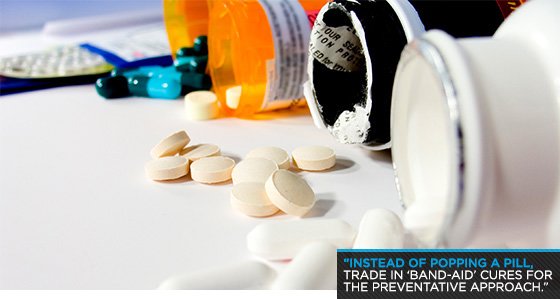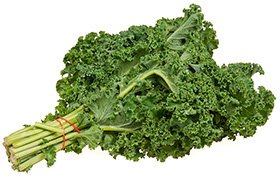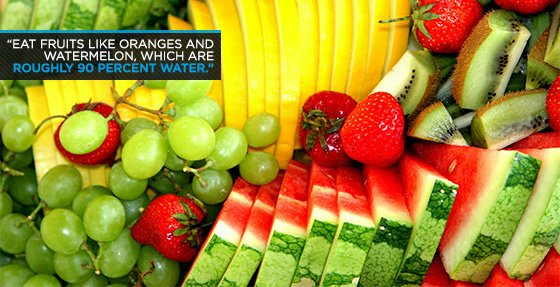7 Ways McDonalds Is Hijacking Your Brain
Source: (Psychology Today) When McDonald’s began advertising its $1 menu featuring the Big N’ Tasty burger, some franchise owners were forced to sell them at a net loss; the popular item cost $1.07 to make. How could they afford to do this? Because McDonald’s already knew you were going to buy fries and a Coke—products with big profit margins. It costs pennies to fill up a large drink, but you’re charged more than a buck for it. This is a great deal for them and not such a great deal for us, but we can’t help ourselves, because sugar lights up our brain’s reward pathway. Many recent neuroscience discoveries about food’s effects on our brains and how we make decisions about food are actually gold-standard trade secrets from super chains such as McDonald’s. With billions and billions served, they must be on to somethin
1. Addictive properties of sugar.
Nearly everything on McDonald’s menu contains some sugar, from the drinks to the ketchup to the hamburger buns and fries. McDonald’s knows that most people are going to shell out an extra dollar for a soft drink because sugar is addictive. Just as you can develop a physiological and psychological dependence on cocaine, you can become dependent on sugar. Here is a video I made in regards to the 3 most addictive foods. <–
Recent experiments have shown that sugar offers the hallmarks of addiction: bingeing, withdrawal and craving. Researchers kept rats from eating for 12 hours, then gave them unlimited access to food and sugar water for a brief period, and then took the food and sugar away again. They repeated this schedule for a few weeks. The rats formed a cycle of bingeing when given access to sugar, and over time they increased their intake to twice the amount from when they started. When the researchers stopped offering sugar or gave the rats an opioid blocker, which prevents the high by blocking some of the pleasurable effects in the brain, the rats showed signs of withdrawal, such as teeth-chattering and body tremors.
McDonald’s recently added new menu items, including McCafe fruit smoothies, which pack in more sugar per serving than Coca-Cola. With that much sugar, McDonald’s slogan is probably right: we’re lovin’ it.
2. The push of convenience
 The fact that you can go to almost any city in the country and find a McDonald’s within five minutes of driving contributes to the likelihood of compulsive eating. Similarly, recent epidemics of addiction to cocaine and heroin have accompanied increased availability and affordability of these drugs.
The fact that you can go to almost any city in the country and find a McDonald’s within five minutes of driving contributes to the likelihood of compulsive eating. Similarly, recent epidemics of addiction to cocaine and heroin have accompanied increased availability and affordability of these drugs.
Part of the reason that convenience sways us so much is that we have a limited amount of impulse control. Some of us are better at resisting temptation, while some are more likely to give in. Dopamine activity in your nucleus accumbens, the brain’s reward center, can disrupt your brain’s decision making ability by interfering with your prefrontal cortex, the brain’s impulse control region.
Dopamine has five unique types of receptors, numbered 1-5, but dopamine2 (D2) receptors seem to be most important for compulsive eating. Imaging studies show that for obese participants, fewer D2 receptors correspond to higher body-mass index. With fewer D2 receptors, they’re more likely to eat compulsively; it becomes even harder to resist super-sizing their meal.
3. The brain’s economy and the Value Meal
Low prices minimize the pain associated with parting with your hard-earned money. Decisions become difficult when two opposing forces try to sway you, in this case, spending money versus eating. The brain weights the costs and benefits of a decision in a region called the orbitofrontal cortex. Brain-imaging has shown that losing money can cause your brain to experience the same pattern of activity as when you stub your toe. Losing money hurts. Yet McDonald’s manages to sidestep this problem by pricing a sandwich cheaper than the Sunday newspaper (which helps make up for the pain of your $40 filet mignon the night before). At McDonald’s, you get the rewarding meal without the pain of losing money. They make the decision easy for your brain.
4. Our brains prefer high-calorie foods
As suggested by Jonah Lehrer in “The Frontal Cortex,” our brains evolved during a time when food was scarce, so we became adept at choosing foods that packed calories.
In one recent experiment, scientists used genetically engineered mice that were missing sugar receptors and therefore unable to detect sweetness in food. The researchers then gave the mice free access to two water dispensers, one with sugar water and one with regular water. Initially, the mice showed no preference; sugar water tasted just like regular water. However, after several hours, the mice shifted to drinking almost exclusively from the sugar water dispenser. To ensure that the mice preferred the calories, but could not detect the taste, the researchers offered them water sweetened with sucralose (e.g. Splenda). The mice didn’t take it.
When the scientists analyzed the mice brains, they found that the mice released dopamine in response to sugar water, even though they couldn’t taste it, but not in response to regular water or sucralose. Our brains can tell the difference between high calorie foods and diet foods even if they taste the same.
5. Addictive properties of speed
Drugs have a hierarchy of addictive potential based on the speed that they reach your brain. Pills have to be swallowed, broken down in the stomach, pushed into the digestive tract and then absorbed into the blood stream before they can reach your brain. The reward you experience comes relatively long after you take the drug. Heroin skips the lag time; injecting it directly into your bloodstream sends it to your brain within seconds. The closer you can pair a stimulus with a reward, the stronger the association will be. 
Similarly, fast food provides a quick fix for hunger. You don’t even have to get out of your car to pick up a Big Mac. You place your order at the drive-thru and within two minutes you can take the first bite as you drive home. You can hardly get a pan hot enough to fry in that time. The sooner you have the burger in hand, the sooner it can trigger the release of the cocktail of rewarding chemicals in your brain.
6. Brains like branding
Just as Pavlov was able to get a dog to salivate at the sound of a bell, McDonald’s gets your juices flowing anytime you hear their jingle. Pavlov showed that if he rang a bell before giving food to a dog, eventually the bell itself would whet its appetite.
Across the nation, McDonald’s provides a consistent experience every time you enter its doors. The employees recite a scripted greeting, the menu looks the same, and the same images and logos are posted on the walls. The more consistent the experience, the more strongly your brain associates the Golden Arches with the meal that follows.
The brain’s reward chemical is dopamine, a molecule that’s released when you experience something you enjoy. However, one of the brilliant aspects of the brain is its ability to learn and make predictions about the world based on past experiences. When the brain learns that a certain cue is associated with a reward, dopamine neurons learn to fire whenever the cue appears, even before the reward is given. Dopamine does more than simply reward you; it also motivates you to seek the pleasure again. As soon as you see the cue, your brain begins to anticipate the reward. The anticipation is part of the pleasure. Would you like fries with that?
7. McNuggets stoke your memory
In a recent study, researchers gave children chicken nuggets in an unmarked container or in McNuggets packaging. Not surprisingly, kids preferred the ones that resembled a Happy Meal. Neuroscience research has shown that a big part of the pleasure of eating stems from memories tied to the food, not taste alone.
7 Ways McDonalds Is Hijacking Your Brain Read More »














